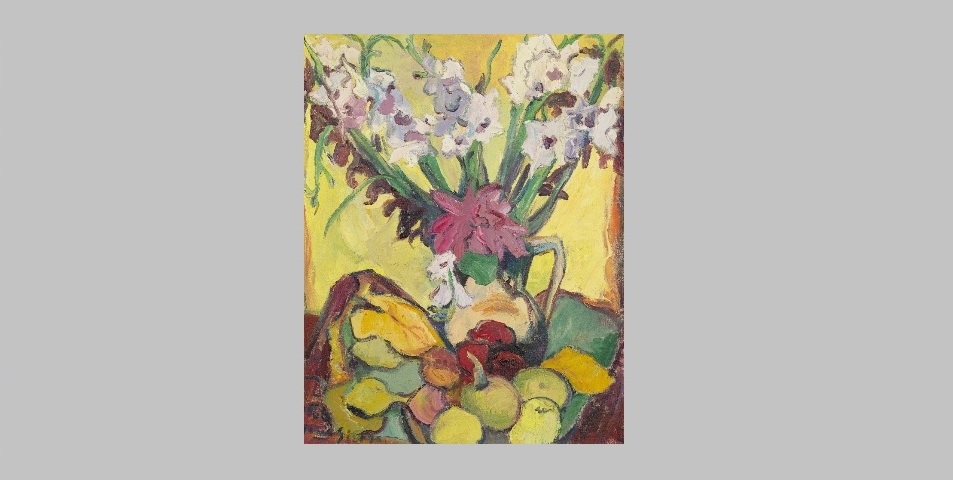 Still Life of Gladioli and Fruit, a late painting by Irma Stern, is one of the leading works in The South African sale at Bonhams in London on 21 March, estimated at £80,000-100,000
Still Life of Gladioli and Fruit, a late painting by Irma Stern, is one of the leading works in The South African sale at Bonhams in London on 21 March, estimated at £80,000-100,000
The painting, which dates from 1960, was painted towards the end of the artist’s life. As Stern’s health declined, she was less able to undertake the long journeys of her younger years so she took inspiration from her surroundings, such as the flowers and fruit from her garden at the Firs at Rondebosch, her home from 1927 until her death in 1966 and now the Irma Stern Museum.
"Still Life of Gladioli and Fruit is a wonderful painting, showing Stern’s almost intuitive grasp of colour and her great command of technique, honed over several decades. Still lifes were always important to her, offering the chance for experimentation that portrait painting could not always provide," said Bonhams head of South African Art, Giles Peppiatt.
The sale will also include 'A Township Street by Gerard Sekoto', estimated at £40,000-60,000. This undated work belongs stylistically to Sekoto’s output from the late 1950s. At the time, he was living in Paris in self-imposed exile. He suffered from home sickness, however, and A Township Street is one of several paintings that hark back to his life in Sophiatown near Johannesburg, his home for a number of years.
Portrait of an Indian Woman by Irma Stern estimated at £25,000-35,000. The work was painted in 1945, the year the artist made her second visit to Zanzibar. Although it is not known whether Stern met the sitter in Cape Town or Zanzibar, the vibrant colours and interplay of warm flesh tones and dark glossy hair are all consistent with it being the latter.
Primavera II by Alexis Preller, estimated at £15,000-20,000. Painted in watercolour in 1941, while he was serving in the South African Medical Corps, Primavera II is a version of Preller’s oil painting of the previous year, Girl with a Flower. The flowers in the woman’s hair symbolise the transience of youth – a reality faced by Preller on a daily basis in his war work and from which the painting of Primavera, the Goddess of Spring, may have provided some respite.

